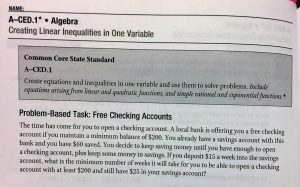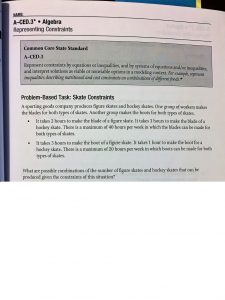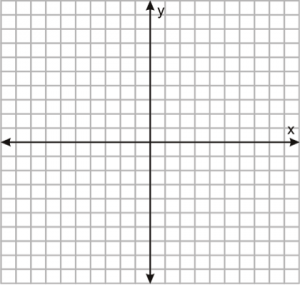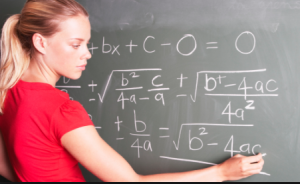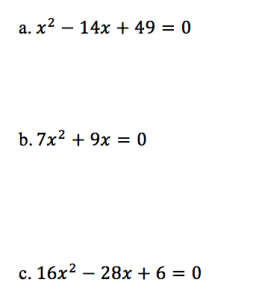High School Geometry: Polygons and Parallelograms
This learning progression will be taught at Ellensburg High School in a Geometry course. The students in the class this learning progression is being taught in are all good students. By that I mean each student is a diligent and hard worker. The course text is Geometry: Reasoning, Measuring, Applying by McDougal Littell. The learning progression covers sections 6.1-6.3, after which will be a summative assessment. Section 6.1 covers the basics of Polygons; what they are, definitions related to them, procedures for determining a figure is a polygon, and the different types of polygons. Section 6.2 covers the properties of parallelograms; related theorems and proofs. Section 6.3 covers the theorems and proof of parallelograms being quadrilaterals. I have planned to spend a single lesson on each section with another lesson afterward designated to a quiz. Below are the prior CCSS which have been covered that are related this learning progression:
Experiment with transformations in the plane
CCSS.MATH.CONTENT.HSG.CO.A.1
Know precise definitions of angle, circle, perpendicular line, parallel line, and line segment, based on the undefined notions of point, line, distance along a line, and distance around a circular arc.
Prove geometric theorems
CCSS.MATH.CONTENT.HSG.CO.C.9
Prove theorems about lines and angles. Theorems include: vertical angles are congruent; when a transversal crosses parallel lines, alternate interior angles are congruent and corresponding angles are congruent; points on a perpendicular bisector of a line segment are exactly those equidistant from the segment’s endpoints.
Make geometric constructions
CCSS.MATH.CONTENT.HSG.CO.D.12
Make formal geometric constructions with a variety of tools and methods (compass and straightedge, string, reflective devices, paper folding, dynamic geometric software, etc.). Copying a segment; copying an angle; bisecting a segment; bisecting an angle; constructing perpendicular lines, including the perpendicular bisector of a line segment; and constructing a line parallel to a given line through a point not on the line.
The students have mastered these concepts and CCSS through activities and tasks assigned in earlier learning progressions. Thus, the students are prepared and have the appropriate academic knowledge to begin learning CCSS.MATH.CONTENT.HSG.CO.C.11 which covers proving theorems about parallelograms. As I explain the tasks within the learning progression I will explain how the students’ prior academic knowledge was necessary; as well as, how the new concepts build off of the students’ prior knowledge will help them gain a deeper understanding of the new concepts. However, before beginning the explanation of the tasks and assessments I would first like to discuss my instructional strategies.
When teaching the learning progression I will use direct instruction and the use multi-media to communicate the learning targets, the concepts, and the directions for the tasks. The initial discussion will not provide examples. I want the students to struggle and make their own inquiries about how to solve the posed problems. I will then make use of grouping to have students work together on the tasks and make inquiries as a group or as an entire class. I will also allow students who have figured something out to travel to another group and share what they know after they first share with their own group (not a requirement though). This will work effectively because I know that my students are diligent workers and that they have proven they work well in groups. I also know that it will promote them to work together and share procedures and reasoning if I give them the opportunity to do so. Lastly, this learning progression will only include formative assessment except for the last quiz since all work will be done in groups and I want to assess discussion and inquiry not mathematical correctness. For the most part answers will be gone over as a whole class so students that I ca make sure all students have the correct solutions, procedures and reasoning to be studying.
Lesson 1: Polygons
The first lesson does not touch a CCSS but teaches the students the necessary prior-academic knowledge needed to learn HSG.CO.C.11. As stated above my lessons do not begin with lectures or examples of how to solve the related problems within the lesson’s tasks. I will begin this first lesson with some light-hearted dialogue with the students to ease them into a learning-mindset. Afterwards, I will hand out a worksheet which I created. I devised the worksheet so that once finished it can be used as a resource tool for studying and review. The worksheet has this prompt, “[d]irections: For the figures 1-13 state which figures are polygons and why. If it is a polygon name it based upon its number of sides and state whether it is concave or convex. Lastly, state whether or not the polygon is regular or not.” Attached to the worksheet is a sheet with 13 figures; some are polygons and some are not, some are concave polygons and some are convex polygons, and some are regular polygons.
How this activity will work is once I have handed it out students will be directed to tackle the first part of the prompt in their groups without help from me. Students have been working with polygons for quite a while but without me explicitly telling them that have been. Thus, it is my hope that through inquiry some of the students will be able to determine which figures are polygons and which are not. Then those students can share their reasoning with the class. If after about 2 minutes not students have made any progress I will pick a figure and state whether or not it is a polygon. Students will then have an example to go off of. By 4 minutes, whether students are finished or not, I will ask the class to quiet down and for any volunteers to share which they chose to be polygons or not to be polygons. Once all of the students had shared I will go over the definition of a polygon and then go through which are and are not on the worksheet. Just like how we as a class went through this part of the prompt so too will we with the other parts. By the end students will have helped each other create a resource tool with visual representations connected to descriptive details. Students will have examples to study and use as reference on homework problems. Which leads me to the last part of this lesson; a homework assignment which has students answering 5-10 questions picked from the section 6.1 of the text.
Lesson 2: Properties of Parallel Lines
As stated above students have gone over parallel lines and have also constructed parallel lines. Thus, I have decided to begin this lesson by having student construct a parallelogram without actually telling them that. I will direct them to construct two parallel lines on a sheet of paper and extend the lines across the whole sheet. Then I will direct students to create two more parallel lines that are not parallel to the other lines and also extend the lines across the whole sheet. Lastly, I will ask the students if any of them know what they had just created. Hopefully a student might know and share but if not I will explain what they created and how it relates to what we are in the lesson.
The next step in the lesson would be to direct students to discover any properties about the parallelogram they just created; for instance any congruent angles or sides, any supplementary angles, or the fact that their diagonals bisect each other. I will designate 10 minutes to this part of the lesson and while students are discovery the properties I will be walking from group to group posing specific questions to promote the right inquiries. Once those 10 minutes are over I will present the 4 related theorems and ask the students how many of the 4 theorems they discovered and make a tally up on the board (a little competition never hurt). I will then go over two examples of how to use these properties to solve proofs relating parallelograms. The end of the lesson would be designated to their homework assignment which would incorporate basic problems from section 6.2 and 2 hand-made, two-column proofs. Students would only have in-class time for their homework if as a class we went through the example proofs in the time allotted for it.
Lesson 3: Proving Quadrilaterals are Parallelograms
This lesson will be set up exactly the same as the second but with a different introduction. Since the students have already constructed a parallelogram there is no sense in repeating that. Instead, I will open the lesson with this question, “[w]hat are the properties of a quadrilateral?” I will give students some time to discuss this. After a while, 2-3 minutes or so, I will ask students to volunteer what their group concluded the properties of a quadrilateral are. After all of the students have shared what they wanted to I would then go over the properties of a quadrilateral and reference to the properties of a parallelogram we went over the day before. Students should be starting to make the connections in their head that these properties are the same or share similarities. To finish the introductory I would ask the students if a parallelogram is a quadrilateral. Hopefully I would get a volunteer to share their reasoning thus creating a discussion. If not I would lead a discussion as to why it is a quadrilateral. Then as I said before the rest of the lesson would follow the same structure as the one before.
Quiz
All of the assignments, tasks, and activities in the lesson were solely graded upon participation and completion. This is because I always gave the students the answers to the in-class activities at the end which meant I graded only the students’ participation in discussions and group work. The homework assignments were only graded on completion and not correctness because I wanted to promote students to at least provide work for a problem even if they thought they could not do it. A student who does not think they can solve a problem won’t even start it but if completion is the only grade then they will at the least attempt it. Therefore, I have decided to give a quiz half way through chapter 6 so that the students and I have an accurate measure of the conceptual and procedural understanding and reasoning skill that should have been learned in section 6.1-6.3. This assessment will help me determine whether or not the students are ready to move on and it will help the students self-reflect on what they have learned and plan out what they still need to.
